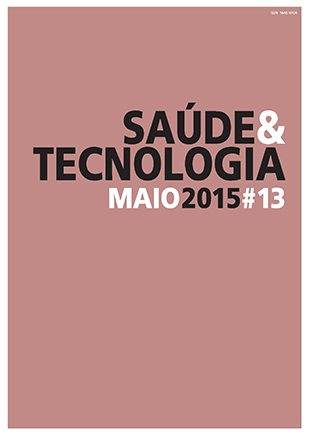Validation of isoelectric focusing method for recombinant erythropoietin detection in human urine
DOI:
https://doi.org/10.25758/may.1194Keywords:
Erythropoietin, Isoelectric focusing, Double blot, Chemiluminescent detection, Method validationAbstract
Erythropoietin (EPO) is a substance that stimulates red blood cell production, increasing muscle oxygenation, and is secreted naturally by the body and excreted in the urine in low concentrations. Due to the special properties of EPO, this was quickly introduced into the world of sports and its illicit use provides advantages in sports performance. In early 2000, was developed a method for direct detection of erythropoietin (EPO) on recombinant human urine by Lasne, based on isoelectric focusing (IEF) in polyacrylamide gel, followed by double blotting, has been published and validated. In 2002, the World Anti-Doping Agency (WADA) implemented this same method which is currently the only official method used by laboratories accredited by WADA. The starting point for this work was the need to implement and validate the reference method, for the detection of recombinant erythropoietin in human urine. The study was conducted at the Laboratory for Doping Analysis (LAD) of the Sports Institute of Portugal (IDP), current IPDJ. The objective of the work focused on validation studies/investigation of different validation parameters (specificity/selectivity; ability identification, detection limit, accuracy, and repeatability), according to the protocol Procedimento Geral Interno of the Antidoping Laboratory of Lisbon. This method of screening and confirmation has revealed performance characteristics in accordance with the applicable requirements for what is considered valid and fit.
Downloads
References
Moreira L. Eritropoietina: produção renal, anemia e cancro. Porto: Faculdade de Medicina da Universidade do Porto; 2011 [cited 2011 Sep 2]. Available from: http://repositorio-aberto.up.pt/handle/10216/21977
Reichel C, Gmeiner G. Erythropoietin and analogs. In Thieme D, Hemmersbach P, editors. Doping in sports: biochemical principles, effects and analysis. Springer; 2010. p. 251-94. ISBN 9783540790884
Lasne F, Martin L, Crepin N, de Ceaurriz J. Detection of isoelectric profiles of erythropoietin in urine: differentiation of natural and administered recombinant hormones. Anal Biochem. 2002;311(2):119-26.
Delanghe JR, Bollen M, Beullens M. Testing for recombinant erythropoietin. Am J Hematol. 2008;83(3):237-41.
Breidbach A, Catlin DH, Green GA, Tregub I, Truong H, Gorzek J. Detection of recombinant human erythropoietin in urine by isoelectric focusing. Clin Chem. 2003;49(6 Pt 1):901-7.
Khan A, Grinyer J, Truong ST, Breen EJ, Packer NH. New urinary EPO drug testing method using two-dimenisional gel electrophoresis. Clin Chim Acta. 2005;358(1-2):119-30.
Lasne F, de Ceaurriz J. Recombinant erythropoietin in urine. Nature. 2000;405(6787):635.
García-Vaquero Soriano MP. Análisis de rhEPO en orina: metodologia aplicada en el Laboratorio de Control de Dopaje del CSD. Col ICD: invest cienc deporte. 2005;(43):219.
Lasne F, Thioulouse J, Martin L, de Ceaurriz J. Detection of recombinant human erythropoietin in urine for doping analysis: interpretation of isoelectric profiles by discriminant analysis. Electrophoresis. 2007 ;28(12):1875-81.
Ayotte C, Pascual JA, Gmeiner G, Reichel C, Lasne F, Saugy M. Harmonization of the method for the identification of recombinant erythropoietins and analogues. WADA Executive Committee; 2009.
Lamon S, Robinson N, Sottas PE, Henry H, Kamber M, Mangin P, et al. Possible origins of undetectable EPO in urine samples. Clin Chim Acta. 2007;385(1-2):61-6.
Segura J, Pascual JA, Gutiérrez-Gallego R. Procedures for monitoring recombinant erythropoietin and analogues in doping control. Anal Bioanal Chem. 2007;388(7):1521-9.
Lundby C, Achman-Andersen NJ, Thomsen JJ, Norgaard AM, Robach P. Testing for recombinant erythropoietin in urine: problems associated with current anti-doping testing. J Appl Physiol. 2008;105(2):417-9.
World Anti-Doping Agency. Harmonization of the method for the identification of recombinant erythropoietins and analogues. WADA; 2013.
WADA EPO Working Group. TD2014EPO: harmonization of analysis and reporting of erythropoiesis stimulating agents (ESAs) by electrophoretic techniques. WADA; 2014.
Lopes H. Selecção e validação de métodos de ensaio. Lisboa: LAD, Instituto do Desporto de Portugal; 2005.
Ramos S. Validação de métodos qualitativos – EPO. Lisboa: LAD, Instituto do Desporto de Portugal; 2010.
Tavares S. Procedimento de deteção de eritropoietina recombinante humana na urina por focalização isoeléctrica. Lisboa: LAD, Instituto do Desporto de Portugal; 2010.
Lasne F. Double-blotting: a solution to the problem of nonspecific binding of secondary antibodies in immunoblotting procedures. J Immunol Methods. 2003;276(1-2):223-6.
Seibersdorf Labor GmbH. GASepo software package for quantification of recombinant erythropoietin in urine probes. Seibersdorf Labor GmbH; 2005.
Seibersdorf Labor GmbH. GASepo software package for quantification of recombinant erythropoietin in urine probes (supplement v2.0). Seibersdorf Labor GmbH; 2010.
Stolc S, Bajla I. Improved accuracy of band detection in GASepo system for quantitative analysis of images in EPO doping control. Meas Sci Rev. 2007;7(2):14-8.
Downloads
Published
Issue
Section
License
Copyright (c) 2022 Saúde e Tecnologia

This work is licensed under a Creative Commons Attribution-NonCommercial-NoDerivatives 4.0 International License.
The journal Saúde & Tecnologia offers immediate free access to its content, following the principle that making scientific knowledge available to the public free of charge provides greater worldwide democratization of knowledge.
The journal Saúde & Tecnologia does not charge authors any submission or article processing charges (APC).
All content is licensed under a Creative Commons CC-BY-NC-ND license. Authors have the right to: reproduce their work in physical or digital form for personal, professional, or teaching use, but not for commercial use (including the sale of the right to access the article); deposit on their website, that of their institution or in a repository an exact copy in electronic format of the article published by Saúde & Tecnologia, provided that reference is made to its publication in Saúde & Tecnologia and its content (including symbols identifying the journal) is not altered; publish in a book of which they are authors or editors the total or partial content of the manuscript, provided that reference is made to its publication in Saúde & Tecnologia.







